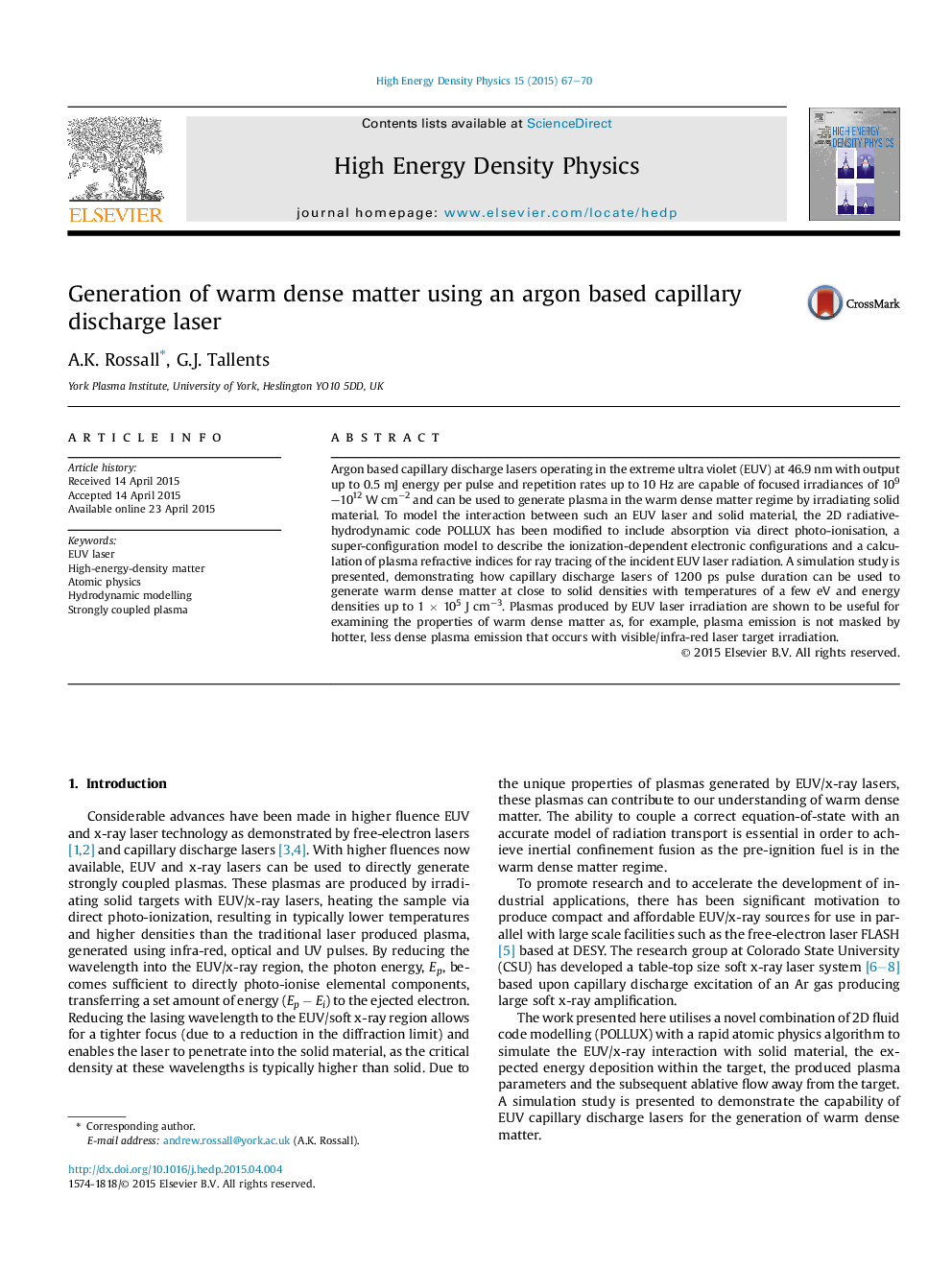| Article ID | Journal | Published Year | Pages | File Type |
|---|---|---|---|---|
| 8133548 | High Energy Density Physics | 2015 | 4 Pages |
Abstract
Argon based capillary discharge lasers operating in the extreme ultra violet (EUV) at 46.9Â nm with output up to 0.5Â mJ energy per pulse and repetition rates up to 10Â Hz are capable of focused irradiances of 109-1012Â WÂ cmâ2 and can be used to generate plasma in the warm dense matter regime by irradiating solid material. To model the interaction between such an EUV laser and solid material, the 2D radiative-hydrodynamic code POLLUX has been modified to include absorption via direct photo-ionisation, a super-configuration model to describe the ionization-dependent electronic configurations and a calculation of plasma refractive indices for ray tracing of the incident EUV laser radiation. A simulation study is presented, demonstrating how capillary discharge lasers of 1200Â ps pulse duration can be used to generate warm dense matter at close to solid densities with temperatures of a few eV and energy densities up to 1Â ÃÂ 105Â JÂ cmâ3. Plasmas produced by EUV laser irradiation are shown to be useful for examining the properties of warm dense matter as, for example, plasma emission is not masked by hotter, less dense plasma emission that occurs with visible/infra-red laser target irradiation.
Related Topics
Physical Sciences and Engineering
Physics and Astronomy
Astronomy and Astrophysics
Authors
A.K. Rossall, G.J. Tallents,
